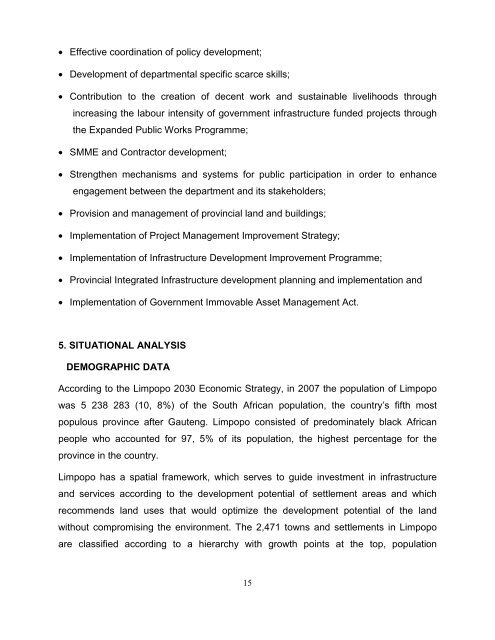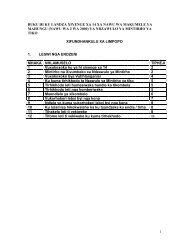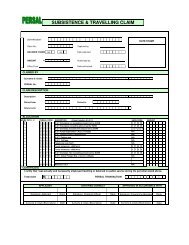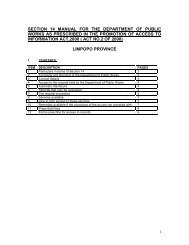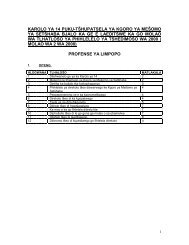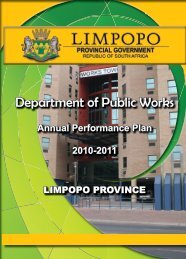2010-2015 Strategic Plan - Department of Public Works
2010-2015 Strategic Plan - Department of Public Works
2010-2015 Strategic Plan - Department of Public Works
You also want an ePaper? Increase the reach of your titles
YUMPU automatically turns print PDFs into web optimized ePapers that Google loves.
• Effective coordination <strong>of</strong> policy development;<br />
• Development <strong>of</strong> departmental specific scarce skills;<br />
• Contribution to the creation <strong>of</strong> decent work and sustainable livelihoods through<br />
increasing the labour intensity <strong>of</strong> government infrastructure funded projects through<br />
the Expanded <strong>Public</strong> <strong>Works</strong> Programme;<br />
• SMME and Contractor development;<br />
• Strengthen mechanisms and systems for public participation in order to enhance<br />
engagement between the department and its stakeholders;<br />
• Provision and management <strong>of</strong> provincial land and buildings;<br />
• Implementation <strong>of</strong> Project Management Improvement Strategy;<br />
• Implementation <strong>of</strong> Infrastructure Development Improvement Programme;<br />
• Provincial Integrated Infrastructure development planning and implementation and<br />
• Implementation <strong>of</strong> Government Immovable Asset Management Act.<br />
5. SITUATIONAL ANALYSIS<br />
DEMOGRAPHIC DATA<br />
According to the Limpopo 2030 Economic Strategy, in 2007 the population <strong>of</strong> Limpopo<br />
was 5 238 283 (10, 8%) <strong>of</strong> the South African population, the country’s fifth most<br />
populous province after Gauteng. Limpopo consisted <strong>of</strong> predominately black African<br />
people who accounted for 97, 5% <strong>of</strong> its population, the highest percentage for the<br />
province in the country.<br />
Limpopo has a spatial framework, which serves to guide investment in infrastructure<br />
and services according to the development potential <strong>of</strong> settlement areas and which<br />
recommends land uses that would optimize the development potential <strong>of</strong> the land<br />
without compromising the environment. The 2,471 towns and settlements in Limpopo<br />
are classified according to a hierarchy with growth points at the top, population<br />
15


